Claytonia perfoliata, Miner's Lettuce
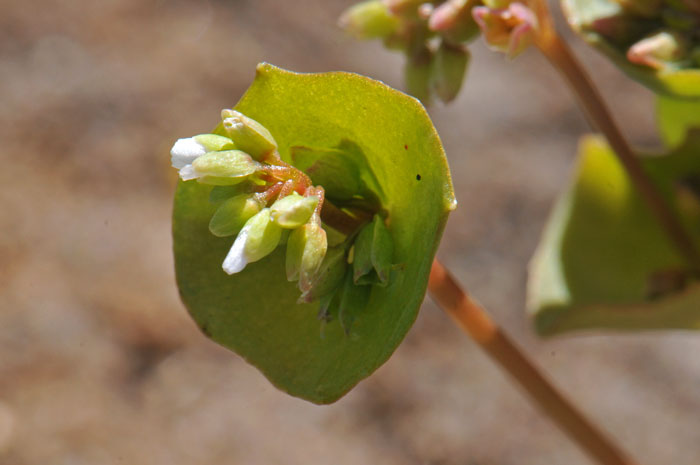
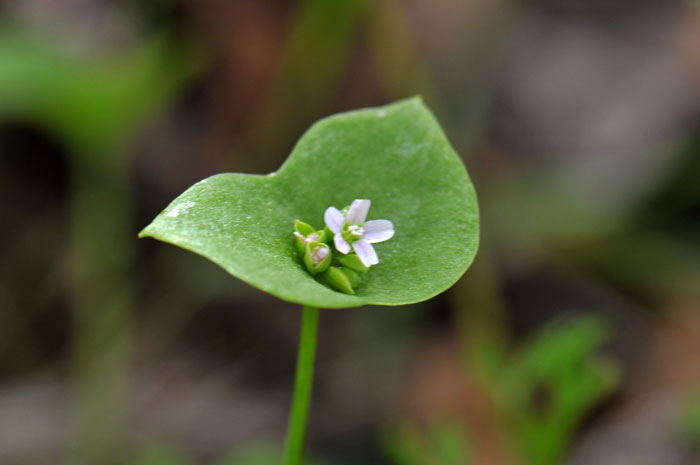
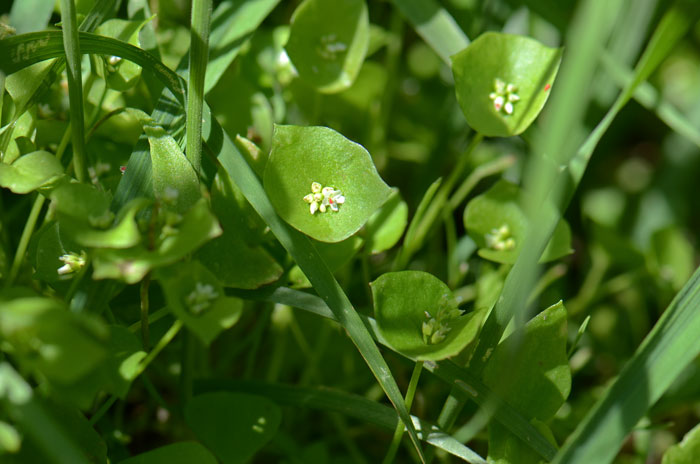
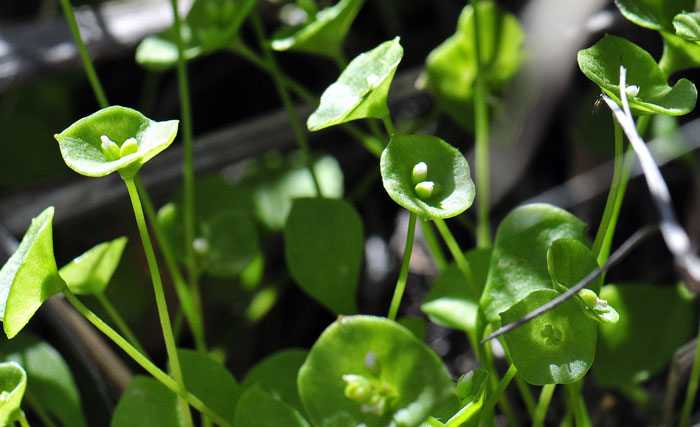
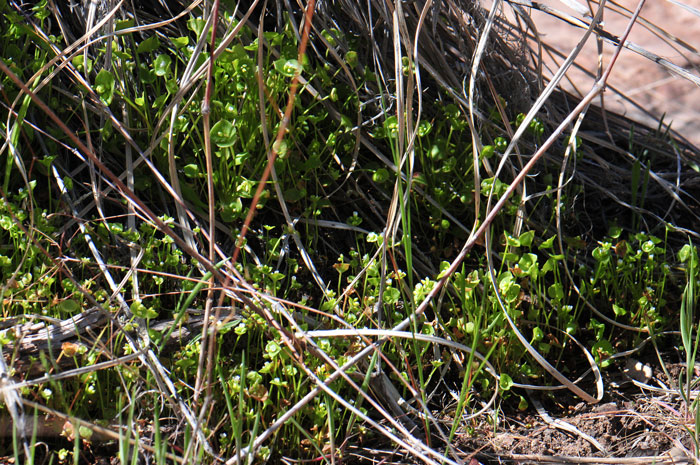
Scientific Name: Claytonia perfoliata
Common Name: Miner's Lettuce
Also Called: Miners Lettuce, Minerslettuce, Winter Purslane, (Spanish: Verdolaga de Invierno)
Family: Portulacaceae, Purslane Family
The genus Claytonia is moving to the [1] Montiaceae Family.
Synonyms: (Claytonia perfoliata var. amplectens, Limnia perfoliata, Montia perfoliata, Montia perfoliata subsp. glauca, Montia perfoliata var. nubigena)
Status: Native
Duration: Annual, perennial;
Size: Up to 15 inches more or less.
Growth Form: Forb/herb; fibrous roots, succulent, stems erect or ascending.
Leaves: Green; glossy green; basal leaves from rosettes with many erect or spreading stems, basal leaves have very long petioles, up to 3 times longer than wide, across the 3 sub-species basal leaves are extremely variable from elliptical, reniform, rhombic or deltoid; the cauline or stem leaves are actually fused around the stems (perfoliate) from 1 pair of opposite sessile leaves which form a squarish (rhombic) or circular (orbicular) leaf (the flowering stalk emerge from this leaf).
Flower Color: White or pink; flowering stalk emerges from the perfoliate stem leaf in a terminal raceme; 5 small white or pink 5 petaled flowers in clusters of 5 to 40; inflorescence with 1 modified leaf (bract); fruit a capsule with shiny smooth seeds.
Flowering Season: February to May.
Flowering Season: subsp. "intermontana"; April to June.
Flowering Season: subsp. "mexicana"; February to April.
Flowering Season: subsp. "perfoliata"; January to May.
Elevation: 2,500 to 7,500 feet.
Habitat Preferences: Moist areas, along brooks and around springs.
Recorded Range: Claytonia perfoliata is found throughout much of western United States and British Columbia, Canada. It is also found in South Dakota; AK, AZ, CA, CO, ID, MT, NH, NV, OR, SD, UT, WA, WY, Canada: BC
North America & US County Distribution Map for Claytonia perfoliata.
U.S. Weed Information: No information available.
Invasive/Noxious Weed Information: No information available.
Wetland Indicator: In North America Claytonia perfoliata, Miner's Lettuce has the following wetland designations: Alaska, FACW; Arid West, FAC; Atlantic and Gulf Coastal Plain, FACU; Eastern Mountains and Piedmont, FACU; Great Plains, FACW; Northcentral & Northeast, FACU; Western Mountains, Valleys, and Coast, FAC.
FACW = Facultative Wetland, usually occur in wetlands, but may occur in non-wetlands
FAC = Facultative, occur in wetlands and non-wetlands
FACU = Facultative Upland, usually occur in non-wetlands, but may occur in wetlands.
Threatened/Endangered Information: No information available.
In Arizona there are 4 species in Claytonia, in California there are 14 species, New Mexico has 3 species, Texas has 1 species, Nevada and Utah each have 7 species. All data is approximate and subject to taxonomic changes.
There are 4 sub-species in Claytonia perfoliata.
Claytonia perfoliata subsp. intermontana, Miner's Lettuce (AK, AZ, CA, NV, OR, UT, WA, WY, BC-Can.);
Claytonia perfoliata subsp. mexicana, Miner's Lettuce (AZ, CA);
Claytonia perfoliata subsp. perfoliata, Miner's Lettuce (AK, AZ, CA, CO, ID, MT, NH, NV, OR, SD, UT, WA, BC-Can.);
The genus Claytonia has been moved to the [1] Montiaceae Family.
Comments: There is extreme variability is both size and shape of Claytonia perfoliata, fully grown plants may function at less than 1 inch in height.
Also see in Southwest Desert Flora; Streambank Springbeauty, Claytonia parviflora.
Claytonia perfoliata has been used for food and pharmaceutical purposes by North American indigenous peoples.
Costanoan Food, Raw foliage used for food in early spring and boiled or steamed when eaten later in the season.
Kawaiisu Food, Vegetable, Leaves eaten as greens.
Mendocino Indian Food, Vegetable, Plants cooked with salt and pepper and eaten as greens.
Shoshoni Drug, Analgesic, Poultice of mashed plants applied for rheumatic pains.
Diegueno Food, Vegetable, Young leaves, picked in the spring before the flowers appear, boiled once and eaten as greens.
See ethno-botanical uses at Native American Ethnobotany, University of Michigan, Dearborn.

